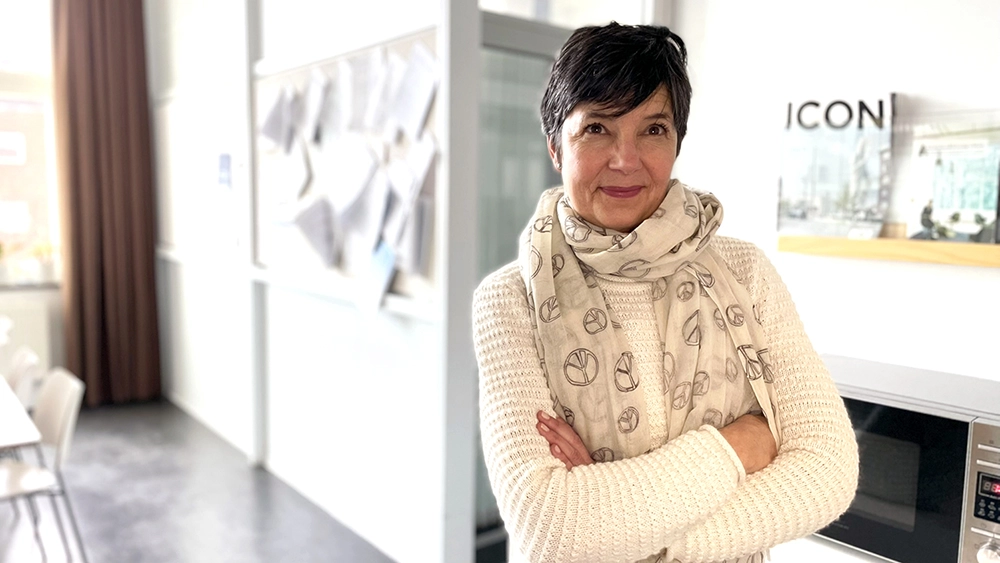“Both men and women gravitate toward power”

Why do outdated masculine ideals persist in some work places despite a growing awareness about equality? The short answer is "unequal distribution of power," says KTH researcher Charlotte Holgersson, who examines "homosocial cultures" in the research programme Men in Focus.
Imagine a workplace where some individuals always have access to the corridors of power while others remain excluded. Or a company where safety regulations are ignored because prioritizing safety is perceived as ‘unmanly’. Or perhaps an office environment where employees circulate inappropriate images via email.
These may not sound like ideal workplaces, but they are precisely the types of organisations that intrigue Charlotte Holgersson, an associate professor at KTH Royal Institute of Technology.
In the programme Men in Focus, she studies the dynamics of homosocial environments, which are often found in male-dominated industries.
"We want to understand how these cultures are maintained so that we can identify ways to change them," she explains.
Maintaining cultures
According to Holgersson, such workplaces are often shaped by a strong male norm—one that excludes those who don’t conform to the ideal while reinforcing a sense of belonging for those who do. This creates hierarchies not only among men but also between men and women.
How, then, do these ideals persist in a society that has become more enlightened, has gone through the #MeToo era, and is welcoming younger generations with more egalitarian values into the workforce?
"It’s because men continue to occupy positions of power. We all—women and men—gravitate toward power. Men validate other men, but so do women, because it can open doors for them. In doing so, women also contribute to maintaining these cultures."
If women held the majority of leadership positions, Holgersson believes the same phenomenon could emerge, but in reverse. Both men and women would then gravitate toward women in power. But she notes, we can’t predict exactly how that would manifest, since cultural associations with gender vary. Holgersson also emphasizes that these dynamics persist due to a lack of awareness.
"It’s difficult for those in positions of influence to recognize their privileges and the consequences of an unequal distribution of power," she says.
Exclusionary cultures can also foster change
Another barrier to breaking these patterns—or speaking out against workplace cultures—is the fear of standing out or facing repercussions. In some cases, silence stems from misplaced concern.
"One example is when a joke is so inappropriate but people let it slide—not because they agree, but because they don’t want to embarrass the person who made it or create discomfort in the group."
But could homosocial dynamics also be leveraged to foster change? Holgersson believes so. If the norm shifts to embrace gender equality as an ideal, the same mechanisms that sustain exclusionary cultures could help dismantle them.
"We've seen cases where a manager has made gender equality a clear priority. As a result, some men in leadership positions engaged with the issue, and those who were initially skeptical changed their stance when they saw the cultural shift taking place."
Another effective strategy is highlighting progress in gender equality, making it a recognized and rewarded achievement. Holgersson suggests that acknowledging contributions to gender equity—especially when they factor into promotions—can help sustain long-term change.
A sought-after competency
Holgersson hopes that Men in Focus will generate valuable insights into the conditions that enable men to become change leaders in gender equality efforts. In addition to hosting seminars and webinars, Holgersson and her team lecture at leadership training programmes, networking events, and conferences.
The research is also used when teaching KTH students.
"It’s important that students are equipped with this knowledge—it’s a sought-after competency for future leaders."
Currently, working toward gender equality can feel like pushing against the tide. All of a sudden we see a resurgence of traditional masculine ideals, authoritarian leaders, and influencers on social media who want to reinstate old-fashioned gender roles. The boundaries of what is considered acceptable discourse and behavior are shifting. Holgersson acknowledges the challenge but sees it as an opportunity:
"It forces us to be more explicit about our values. What do we stand for? What kind of society do we want to shape? I’d like to believe that misogyny isn’t deeply rooted, and that when people truly understand the consequences of inequality, they want change. But ultimately, it’s up to each individual to decide how they act on that knowledge."

